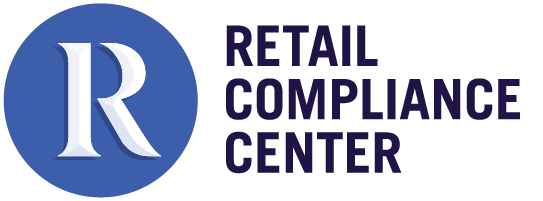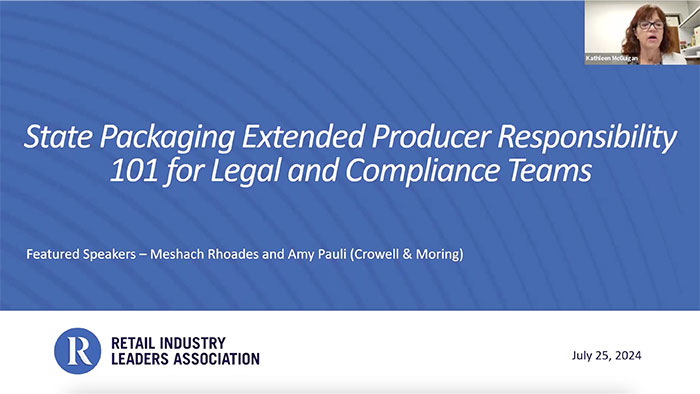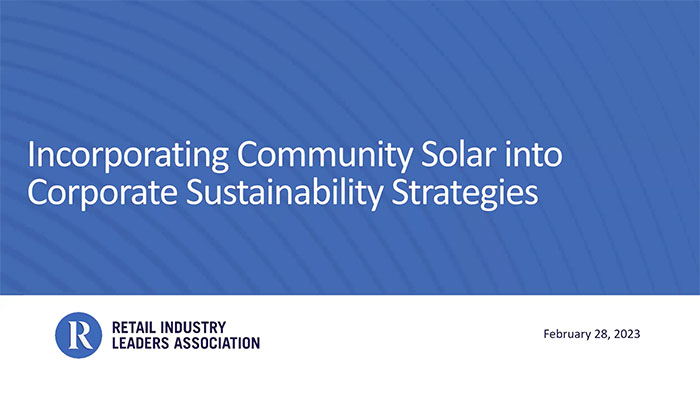Appliances and Electronics
This area covers environmental issues related to retail sales and services of appliances and electronics. The main compliance issues are recycling and disposal requirements (some appliances may contain components which are considered hazardous waste), refrigerants (which can be ozone-depleting substances (ODS)), hazardous materials transportation (primarily batteries) and environmental retail product requirements.
Compliance Considerations
Recycling and Disposal
Some appliances and electronics may contain hazardous components which may need to be managed as hazardous waste. State and local governments may also regulate the recycling and disposal of non-hazardous appliances and electronics. Because of the complexity of federal and state hazardous waste regulations combined with state and local requirements for recycling and disposal, retailers should make sure that they understand the requirements and use experienced and qualified waste services providers.
Hazardous Waste
Some appliances contain hazardous components, such as refrigerants, oils, mercury, polychlorinated biphenyls (PCBs), or other hazardous materials. Appliances manufactured before 1979 may contain PCB capacitors. PCB wastes are regulated by the EPA under the Toxic Substances Control Act. Appliances manufactured before 1995 can contain chlorofluorocarbons (CFCs) as refrigerants, which are subject to special management requirements for removal under the Clean Air Act (CAA), and may also be considered hazardous waste. Appliances manufactured before 2000 can contain mercury switches and relays, which may be considered hazardous wastes. Because of the potentially hazardous materials in appliances and electronics, it is important to use a recycler or waste services provider that is qualified to handle appliances and electronics. Depending on the jurisdiction, there may be certification, training, or other requirements for recyclers or waste services providers that handle appliances or electronics.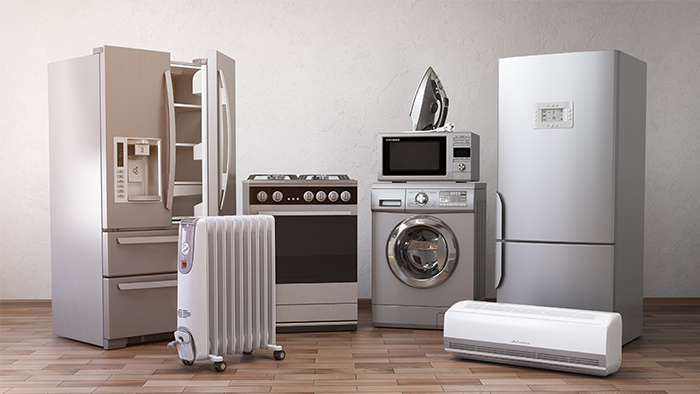
Electronic or E-Waste
Some electronics may also be considered hazardous waste, including older electronics such computer monitors and TVs that use cathode ray tubes (CRT), which contain lead. Some electronics or components may be considered universal waste, such as certain batteries and appliances or electronics that are considered mercury-containing equipment (e.g., thermostats, pressure gauges, and mercury switches). Recycling may exempt some electronic wastes from hazardous waste regulations if they meet the criteria for exclusions based on scrap metal, circuit boards, or precious metals content.While there is no federal mandate to recycle e-waste, many states have mandatory electronics recycling programs (e.g., landfill bans), so state regulations must be consulted (states with e-waste rules). These regulations are tracked in the RCC's eWaste Matrix.
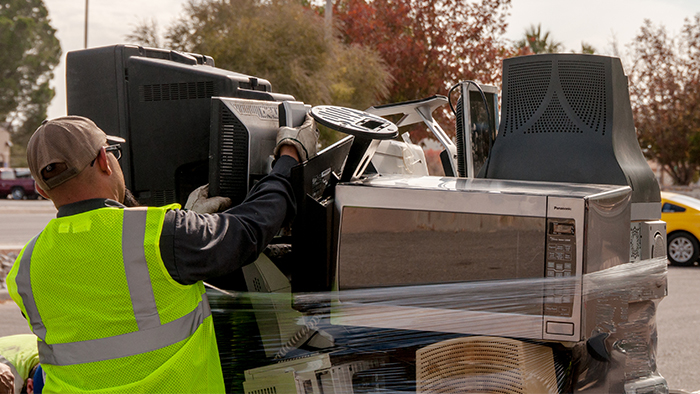
eWaste Matrix
Compliance matrix that provides a detailed overview of legislation across the U.S. that requires retailers to manage waste electronic products.
View Matrix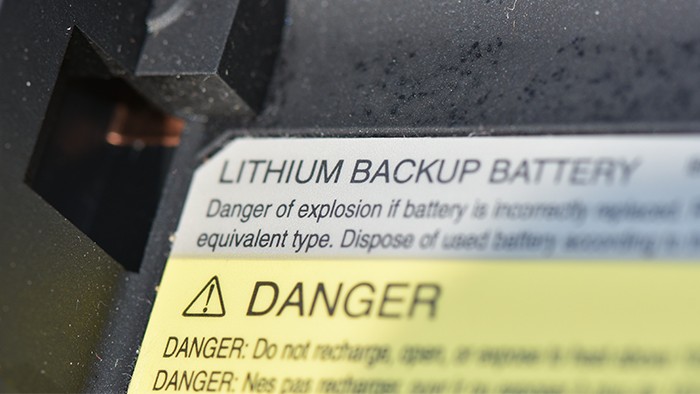
Lithium Batteries Fact Sheet
A fact sheet detailing regulations on transporting lithium batteries and the safety hazards of transporting lithium batteries.
View Fact SheetHazardous Waste Regulations
Some important considerations for retailers that relate to waste appliances and electronics are below.
Reuse and Recycling Exemption: Appliances and electronics that are considered hazardous waste and sent for disposal (for example, to a landfill) count towards the facility's generator status (as a large, small, or very small quantity generator) and must be properly manifested and managed as hazardous waste. However, appliances and electronics sent for reuse or refurbishment prior to reuse generally are not considered hazardous waste and would not be included in the calculation of generator status.
State and Local Laws: State laws may require more stringent management for appliances and electronics. However, some states allow certain electronics to be managed as universal wastes. Many jurisdictions have landfill bans on appliances and many other electronics.
Household Exemption and "Take Back" Programs: Used appliances and electronics generated by households are not considered hazardous waste and are not regulated under federal and many state regulations. Under federal regulations, the household hazardous waste exemption continues to apply after household wastes are collected and consolidated. However, many states cut off the household hazardous waste exemption at the point the waste is collected by another entity, such as a retailer who collects the household waste as a service for customers.
Recyclers: There are federal requirements under the CAA for refrigerants to be recovered from appliances prior to dismantling or disposal. Depending on the state, there may be additional requirements, such as certification, for companies that recycle appliances or electronics. As a result, it is important to use a qualified company to handle appliance and electronics recycling.
The RCC Hazardous Waste Regulations page has more detail.
Hazardous Material Transportation
The U.S. Department of Transportation Pipeline and Hazardous Materials Safety Administration (PHMSA) has specific requirements for shipping hazardous materials, including lead acid batteries and lithium batteries either in equipment or separately. The rules include requirements for communication (e.g., marking, labeling, documentation), packaging, emergency response information, and training. Hazardous materials transported across national borders may also be subject to international requirements, such as the International Air Transportation Association's (IATA) restrictions on the acceptable charge of lithium batteries. RCC has a fact sheet addressing Frequently Asked Questions (FAQs) about transporting lithium batteries.
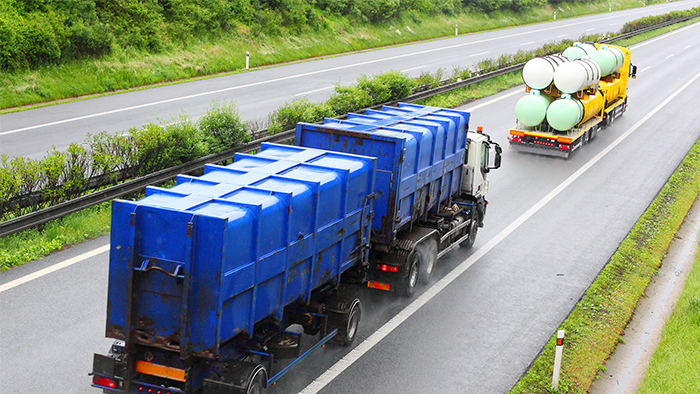
Hazardous Waste Variations by State
View Matrix
Hazardous Waste Generator Reporting
View MatrixRefrigerants – Sales, Handling, and Disposal
Refrigerants that are ODSs, and as of January 1, 2017, ODS substitutes, are managed under the federal CAA. CAA requirements cover handling and the reuse and disposal of ODS and substitute refrigerants, as well as sales of products containing or made with refrigerants. Prior to disposal of a refrigerated appliance, the refrigerant must be recovered (not vented to the atmosphere) and properly recycled or disposed.
There are also federal requirements under Section 608 of the CAA related to servicing appliances such as air conditioning units and refrigeration equipment that are designed to prevent refrigerants from being released. For example, technicians must maximize the recovery and recycling of refrigerants, cannot vent refrigerants to the air, and must be certified. Owners and operators of appliances must comply with recordkeeping and reporting requirements. The RCC Refrigerant Fact Sheet has more information.
There are bans and labeling requirements on the sale of products that contain or are made with ODSs. Starting in 2015, products made with or containing Class II ODSs, chemicals with an ozone-depletion potential of less than 0.2, including all hydrochlorofluorocarbons (HCFCs) (found in products such as refrigerators and water heaters), must have a warning label. EPA's product label page has more information.
Refrigerant Fact Sheet
Informational fact sheet on refrigerants and the regulations surrounding them which include requirements for sales, repairs, and recordkeeping.
View Fact SheetSustainability
The reuse of appliances and electronics, where feasible, can reduce regulatory requirements and be beneficial environmentally. There are also many organizations that accept donations of older equipment for reuse.
For waste appliances, the EPA "RAD" or Responsible Appliance Disposal program has resources and partners for proper disposal of refrigerated appliances.
A resource for recycling electronics is the National Center for Electronics Recycling.
Some retailers who sell appliances and electronics run "take-back" programs where they take back used electronics or appliances and recycle them for customers. Some even offer discounts or other incentives to buy a new product at the store when bringing in an item for recycling. While this is beneficial from a sustainability standpoint, it can affect a retailer's hazardous waste generator status so it is important to understand all of the requirements that may apply to a take-back program.
There are voluntary environmental product standards for appliances related to sustainability and environmental performance. At the federal level these include Energy Star for energy efficiency (Energy Star resources for retailers) and WaterSense for water conservation. The Association of Home Appliance Manufacturers (AHAM) has created sustainability standards for a number of appliances, such as refrigerators, humidifiers and toasters.
Related Content
Refrigerant Fact Sheet
Covers air regulations and management requirements that apply in retail covering refrigeration and A/C equipment and ammonia refrigeration systems.
Lithium Batteries Fact Sheet
FAQs on requirements for shipping lithium batteries.
eWaste Matrix
Overview of state legislation with requirements for retailers on managing waste electronic products or ewaste.
Hazardous Waste Generator Improvement Rule Matrix
State-by-state tracking of implementation of the Hazardous Waste Generator Improvement Rule.
Hazardous Waste Variations by State Matrix
Overview of state variations in hazardous waste regulations under RCRA, including hazardous waste characteristics, thresholds, and universal waste.
Hazardous Waste Regulations
Regulations for the proper management and disposal or recycling of hazardous and universal wastes found in retail.
Tags
-
Air
-
Energy
-
Hazardous Waste
-
Solid Waste
